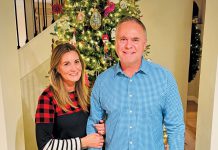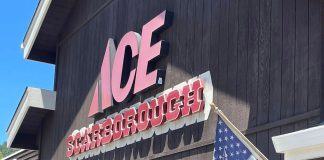I was as nervous as a long-tailed cat in a roomful of rockers. I lay in bed and watched my clock tick off the early morning hours — now 1 a.m., now 2 a.m. — as I waited for the phone to ring.
By 2:30, I realized I was too full of expectation to sleep — just like a child on Christmas Eve. At 3:15 a.m., the call came, and I picked it up to hear a stranger say, “Are you going to meet us?”
“Yes,” I replied. “I’m leaving now.”
Putting on my rubber boots and windbreaker, I picked up my flashlight and cooler, feeling as rough and ready as a firefighter.
Not a neighbor’s light was on as I headed out of Boulder Creek. The mountain road was lonely, and my little dog sat in my lap looking out the car window. Overhanging redwoods swayed like lunatic witches stirring a cauldron. Would a widow-maker get me?
By the end of that mid-October night, I would be able to mark off “Volunteer for First Flush” from my bucket list. Not as big a personal dream as floating down the Grand Canyon, but definitely more accessible.
My team and I from the Santa Cruz Coastal Watershed Council had signed up for this annual event that has collected data on pollutants flowing into the Monterey Bay since 1997. For the participating environmental groups from Half Moon Bay to Big Sur, there are two primary questions: Will this storm front bring the first big rain of the season? And, can we mobilize our teams along the coast fast enough to capture rainwater runoff from the first hour of the storm?
Spotters and telephone trees usually get it right.
This would not be your little mushroom-maker — this would be the biggest storm to hit Santa Cruz County since 1962. Having blasted Japan, Typhoon Melor had us in her crosshairs.
Into the tempest
At 4 a.m., Mission Street is dark and desolate. Venturing off a block, I watched for my team of strangers and a storm drain. I got a face full of rain when I rolled down the window, but I called out to the voices coming from some thick foliage. The game was on!
Adjusting our foothold on the culvert’s slippery slope, our gang of four took turns entering the water for samples. Except for me.
I had visions of falling into the rising surge and being spit out to sea at the other end like a rag doll. I think “coward” is too strong a word. I consoled myself with remembering that I had brought one of the two flashlights and the cooler for the test tubes.
Our specimens would later be analyzed for pollutants, such as high metal concentrations attributed to car brake linings, high nutrient concentrations linked to fertilizers and high bacteria concentrations generated by failing sewer and septic lines.
After an hour or so, we packed up and said our goodbyes.
“Don’t get your feelings hurt if I don’t recognize you on the street,” laughed our team leader, Deborah Taylor. In the dark, we were faceless shape-shifters, distinguished only by our voices: volunteers that passed in the night.
If you would like to contribute your time to preserving and protecting our watersheds, call Debie Chirco-Macdonald or Nancy Scarborough at the Coastal Watershed Council at 464-9200, or visit www.coastal-watershed.org for more information.
• Carol Carson has a master’s in education and has been a docent for Henry Cowell Redwoods State Park and taught courses on Big Basin State Park for the University of California, Santa Cruz, Extension. She is an environmental advocate and educator and writes a frequent nature column for the Press-Banner. E-mail her at ca****@*********on.com.











